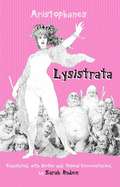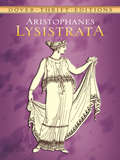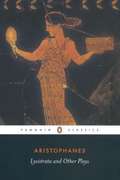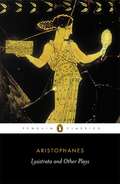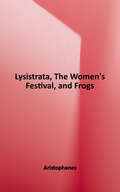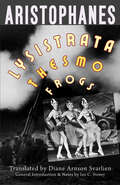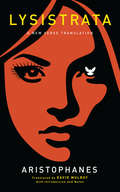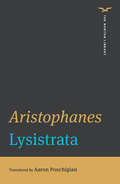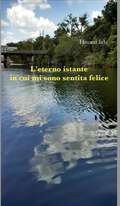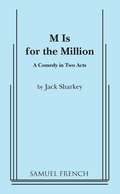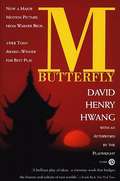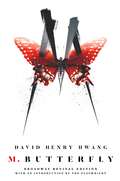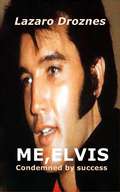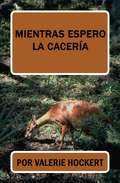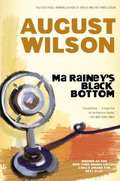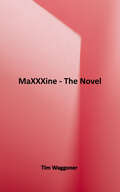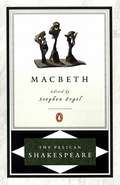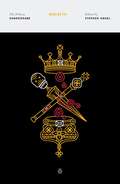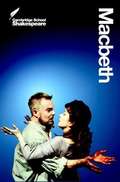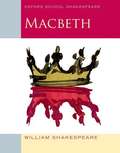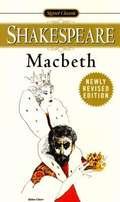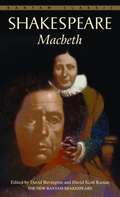- Table View
- List View
Lysistrata
by Aristophanes Sarah RudenThis rollicking new translation of Aristophanes' comic masterpiece is rendered in blank verse for dialogue and in lyric meters and free verse for the songs. Appended commentary essays--on Athenian democracy, ancient Greek warfare, Athenian women, and Greek Comedy--offer lively and informative discussions not only of Aristophanes, but of the broader fifth-century social, political, and cultural context as well.
Lysistrata
by AristophanesFirst presented in 411 B.C., this ancient comedy concerns the efforts of Lysistrata, an Athenian woman, to persuade other woman to join together in a strike against the men of Greece, denying them sex until they've agreed to put down their arms and end the disastrous wars between Athens and Sparta.When the strike begins, and the men respond, the comedic battle of the sexes that ensues makes this spirited play one of the most enjoyable of the classics. In it, Aristophanes employs a mixture of shrewd logic and raffish humor that fully exploits the rich comic potential of the story and its underlying antiwar sentiment. Always a favorite of audiences, Lysistrata, because of its pointed feminist sympathies, is studied and performed today more than ever.
Lysistrata and Other Plays
by Aristophanes Alan H. SommersteinThree plays by the comedian of Ancient Greece Writing at the time of political and social crisis in Athens, Aristophanes was an eloquent yet bawdy challenger to the demagogue and the sophist. The Achanians is a plea for peace set against the background of the long war with Sparta. In Lysistrata a band of women tap into the awesome power of sex in order to end a war. The darker comedy of The Clouds satirizes Athenian philosophers, Socrates in particular, and reflects the uncertainties of a generation in which all traditional religious and ethical beliefs were being challenged. <P><P> For more than seventy years, Penguin has been the leading publisher of classic literature in the English-speaking world. With more than 1,700 titles, Penguin Classics represents a global bookshelf of the best works throughout history and across genres and disciplines. Readers trust the series to provide authoritative texts enhanced by introductions and notes by distinguished scholars and contemporary authors, as well as up-to-date translations by award-winning translators.
Lysistrata and Other Plays: The Acharnians, The Clouds, Lysistrata
by AristophanesThe Acharnians/The Clouds/Lysistrata'We women have the salvation of Greece in our hands'Writing at a time of political and social crisis in Athens, the ancient Greek comic playwright Aristophanes was an eloquent, yet bawdy, challenger to the demagogue and the sophist. In Lysistrata and The Acharnians, two pleas for an end to the long war between Athens and Sparta, a band of women on a sex strike and a lone peasant respectively defeat the political establishment. The darker comedy of The Clouds satirizes Athenian philosophers, Socrates in particular, and reflects the uncertainties of a generation in which all traditional religious and ethical beliefs were being challenged. Translated with an Introduction and Notes by Alan H. Sommerstein
Lysistrata, The Women's Festival, and Frogs (Oklahoma Series in Classical Culture #Volume Forty-Two)
by Aristophanes Michael EwansMost readers nowadays encounter the plays of Aristophanes in the classroom, not the theater. Yet the "father of comedy" wrote his plays for the stage, not as literary texts. Many English translations of the plays were written decades ago, and in their outdated language, they fail to capture the dramatic liveliness of the original comedies. Now Michael Ewans offers new and lively translations of three of Aristophanes' finest plays: Lysistrata, The Women's Festival, and Frogs. While remaining faithful to the original Greek, these translations are accessible to a modern audience--and actable on stage. Here readers will discover--in all its uncensored glory--the often raw sexual and scatological language Aristophanes used in his fantastically inventive works. <p><p>This edition also contains all that a reader needs to understand the plays within a broader context. In his comprehensive introduction, Ewans discusses the political and social aspects of Aristophanic comedy, the conventions of Greek theater, and the challenges of translating ancient Greek into modern English. In his theatrical commentaries--a unique feature of this edition--Ewans draws on his own experience of directing the plays in a replica of the original theater. In scene-by-scene analysis, he provides insight into the major issues each play raises in performance. The volume concludes with two glossaries--one of proper names and the other of Greek terms--as well as a bibliography that includes the most recent scholarship on Aristophanic comedy.
Lysistrata, Women at the Thesmophoria, Frogs (Hackett Classics)
by Aristophanes"Arnson Svarlien's translation offers fresh insight into three of Aristophanes's greatest comedies. The verse flows smoothly, and throughout it is stressed that these plays belong on a stage, with guidance on how that might be accomplished. At the same time, the detailed Introduction and interpretative notes on every page show that both Arnson Svarlien and Storey are deeply committed to presenting a vibrant, modern Aristophanes, and to giving the tools needed for readers and actors to form their own opinions on matters of ongoing scholarly controversy." —C.W. Marshall, FRSC, Professor of Greek, The University of British Columbia
Lysistrata: A New Verse Translation
by AristophanesAristophanes, a native Athenian and the leading exponent of Greek comedy, was born c. 450 BCE. Today forty-three of his plays are known by title; eleven survive. The most famous of these is the whimsical fantasy Lysistrata. A perennial classroom and stage favorite as well as the basis of Spike Lee’s Chi-Raq, the play is as relevant today as it was 2,500 years ago. The premise is simplicity itself: to end the Peloponnesian War, women decide to withhold sex from their husbands until the fighting stops. The play is by turns raucous, bawdy, frantic, and funny. David Mulroy’s exciting new translation retains the original’s verse format, racy jokes, and vibrancy—setting it apart from previous efforts, which are typically reproduced as prose or depart from meaning and meter. His introduction offers a concise summary of Aristophanes’ life and social milieu, including a brief overview of the Peloponnesian War, which took place during the playwright’s lifetime. The appendices include guides on translating meter and Greek pronunciation for aspiring thespians.
Lysistrata: Clouds, Birds, Lysistrata, Women Of The Assembly (The Norton Library #0)
by AristophanesAbout Aaron Poochigian’s translation “Aristophanes was a funny, often obscene social commentator, and he was also a brilliantly fluent, wide-ranging poet, whose lyric rhythms were recited and sung to music, with dancing. It’s very rare for modern translators to convey his poetic virtuosity or make any attempt to bring his meters to life. But Aaron Poochigan has achieved this feat, crafting polymetric translations that convey the whole range of Aristophanes’ larger-than-life characters and provocative, alternative reality scenarios. This new translation is zany, sharp, inventive, vivacious, and surprisingly relevant for our times.” (Emily Wilson, translator of Homer’s Odyssey)
L’eterno istante in cui mi sono sentita felice
by Hitomi IidaUna lettera d'amore per la mia anima gemella capace di guardare con occhi nostalgici oltre il tempo e lo spazio.
M is for the Million
by Jack SharkeyComedy / 7-13m, 4-5f / Lenore has been living high on the income from her daughter's million dollar trust, but if Meg marries before her 25th birthday she gets the trust and Lenore will be penniless. The wedding is scheduled aboard a Mediterranean bound steamship. Complications abound as Lenore tries to stall the marriage, Meg's secret identity and additional fiances surface, a commercial spy intrudes, and a love mad Athenian is ready to marry mother or daughter. Love potions, a ship that can't decide where it's headed and other zany twists make this madhouse of activity great fun.
M. Butterfly
by David Henry HwangJohn Lithgow and B. D. Wong recreate their original roles from the Tony Award-winning production. Inspired by an actual espionage scandal, a French diplomat discovers the startling truth about his Chinese mistress. Bored with his routine posting in Beijing, and awkward with women, Rene Gallimard, a French diplomat, is easy prey for the subtle, delicate charms of Song Liling, a Chinese opera star who personifies Gallimard's fantasy vision of submissive, exotic oriental sexuality. He begins an affair with "her" which lasts for twenty years, during which time he passes along diplomatic secrets, an act which, eventually, brings on his downfall and imprisonment. Interspersed with scenes between the two lovers are others with Gallimard's wife and colleagues, which underscore the irony of Gallimard's delusion and its curious parallel to the events of Puccini's famous opera. Combining realism and ritual with vivid theatricality, the play reaches its astonishing climax when Song Liling, before our very eyes, strips off his female attire and assumes his true masculinity - a revelation which the deluded Gallimard can neither credit nor accept and which drives him finally - and fatally - deep within the fantasy with which, over the years, he has held the truth at bay.
M. Butterfly: Broadway Revival Edition
by David Henry HwangWinner of the Tony Award for Best Play, nominated for the Pulitzer Prize for Drama, and soon to be back on Broadway in a revival directed by the Lion King's Julie Taymor, starring Clive Owen"A brilliant play of ideas… a visionary work that bridges the history and culture of two worlds."—Frank Rich, New York TimesBased on a true story that stunned the world, and inspired by Giacomo Puccini's opera Madama Butterfly, M. Butterfly was an immediate sensation when it premiered in 1988. It opens in the cramped prison cell where diplomat Rene Gallimard is being held captive by the French government—and by his own illusions. He recalls a time when Song Liling, the beautiful Chinese diva, touched him with a love as vivid, as seductive—and as elusive—as a butterfly.How could he have known that his true love was, in fact, a spy for the Chinese government—and a man disguised as a woman? The diplomat relives the twenty-year affair from the temptation to the seduction, from its consummation to the scandal that ultimately consumed them both.M. Butterfly is one of the most compelling, explosive, and slyly humorous dramas ever to light the Broadway stage, a work of unrivaled brilliance, illuminating the conflict between men and women, the differences between East and West, racial stereotypes—and the shadows we cast around our most cherished illusions.The original cast included John Lithgow as Gallimard and BD Wong as Song Liling. During the show's 777-performance run, David Dukes, Anthony Hopkins, Tony Randall, and John Rubinstein were also cast as Gallimard. Hwang adapted the play for a 1993 film directed by David Cronenberg, starring Jeremy Irons and John Lone.TEXT OF THE ORIGINAL BROADWAY PRODUCTION
ME, ELVIS: CONDEMNED BY SUCCESS
by Lilian G. Selvaggio Lázaro DroznesElvis Presley's lifespan is the tragic story of a star prisoner of his own success and the circumstances surrounding him. Teenagers dream about becoming rock stars and Elvis wonders, "What can rock stars dream about?" At 23, Elvis has achieved much more than what he has dreamed of in his wildest fantasies, just to end up trapped in his own image, feeling that his life no longer belongs to him. He is trapped inside the machinery he himself has created. This work of dramatic fiction recreates the most significant moments in the idol's life through anecdotes and his songs, in order to show a chain of situations that lead an idol to pay the price of fame with his own life.
MIentras Espero La Cacería
by Valerie Hockert Guillermo Alberto Cervantes VindiolaDurante el último día de la temporada de caza en en extremo noroeste de los Estados Unidos, George Howard recuerda los muchos momentos de su vida. Desde su niñez marcada por la muerte de su hermano mayor, sus días como estudiante de preparatoria hasta su vida adulta, George ha pasado por un sinnúmero de cosas buenas y contrariedades que lo han conducido hasta este punto en su vida. En este último día de caceria, tomará una decisión que marcará el siguiente curso de su vida.
Ma Rainey's Black Bottom: A Play
by August WilsonPulitzer Prize-winning author of Fences and The Piano LessonWinner of the New York Drama Critics Circle Award for Best PlayThe time is 1927. The place is a run-down recording studio in Chicago. Ma Rainey, the legendary blues singer, is due to arrive with her entourage to cut new sides of old favorites. Waiting for her are her black musician sidemen, the white owner of the record company, and her white manager. What goes down in the session to come is more than music. It is a riveting portrayal of black rage, of racism, of the self-hate that racism breeds, and of racial exploitation.
Ma Rainey's Black Bottom: A Play in Two Acts
by August WilsonThe time is 1927. The place is a run-down recording studio in Chicago. Ma Rainey, the legendary blues singer, is due to arrive with her entourage to cut new sides of old favorites. Waiting for her are her black musician sidemen, the white owner of the record company, and her white manager. What goes down in the session to come is more than music. It is a riveting portrayal of black rage . . . of racism, of the self-hate that racism breeds, and of racial exploitation . . .
MaXXXine: The Novel
by Tim WaggonerHer dream was to be a star…but Hollywood can be a killer. In 1985… Adult film star and aspiring actress Maxine Minx finally gets her big break… But as a mysterious killer stalks the starlets of Hollywood, a trail of blood threatens to reveal her sinister past…
Macbeth
by William Shakespeare Stephen Orgel A. R. Braunmuller"I feel that I have spent half my career with one or another Pelican Shakespeare in my back pocket. Convenience, however, is the least important aspect of the new Pelican Shakespeare series. Here is an elegant and clear text for either the study or the rehearsal room, notes where you need them and the distinguished scholarship of the general editors, Stephen Orgel and A. R. Braunmuller who understand that these are plays for performance as well as great texts for contemplation." (Patrick Stewart) The distinguished Pelican Shakespeare series, which has sold more than four million copies, is now completely revised and repackaged. Each volume features: * Authoritative, reliable texts * High quality introductions and notes * New, more readable trade trim size * An essay on the theatrical world of Shakespeare and essays on Shakespeare's life and the selection of texts
Macbeth
by William Shakespeare Stephen Orgel A. R. BraunmullerThe acclaimed Pelican Shakespeare series, now in a dazzling new series design in time for the 400th anniversary of the Bard's death The legendary Pelican Shakespeare series features authoritative and meticulously researched texts paired with scholarship by renowned Shakespeareans. Each book includes an essay on the theatrical world of Shakespeare's time, an introduction to the individual play, and a detailed note on the text used. Updated by general editors Stephen Orgel and A. R. Braunmuller, these easy-to-read editions incorporate over thirty years of Shakespeare scholarship undertaken since the original series, edited by Alfred Harbage, appeared between 1956 and 1967. With stunning new covers, definitive texts, and illuminating essays, the Pelican Shakespeare will remain a valued resource for students, teachers, and theater professionals for many years to come.This edition of Macbeth is edited with an introduction by series editor Stephen Orgel.For more than seventy years, Penguin has been the leading publisher of classic literature in the English-speaking world. With more than 1,700 titles, Penguin Classics represents a global bookshelf of the best works throughout history and across genres and disciplines. Readers trust the series to provide authoritative texts enhanced by introductions and notes by distinguished scholars and contemporary authors, as well as up-to-date translations by award-winning translators.From the Trade Paperback edition.
Macbeth
by William Shakespeare Rex GibsonCambridge School Shakespeare editions offer an active approach to the Bard's works, treating each play as a script to be acted, explored and enjoyed.
Macbeth
by William Shakespeare Roma GillOxford School Shakespeare is an acclaimed edition especially designed for students, with accessible on-page notes and explanatory illustrations, clear background information, and rigorous but accessible scholarly credentials. Macbeth is one of the most popular texts for study by secondary students the world over. This edition includes illustrations, preliminary notes, reading lists (including websites) and classroom notes.
Macbeth
by William Shakespeare Sylvan BarnetA man's thirst for power ends in tragedy in this Signet Classics edition of one of William Shakespeare's most powerful works. When a trio of witches fortell that Macbeth will become King of Scotland, the brave general is consumed by ambition. Encouraged by his wife to seize the throne, their quest for power leads down a blood strewn path that ends in madness and death in this play that explores the consequences of guilt and corruption. This revised Signet Classics edition includes unique features such as: * An overview of Shakespeare's life, world, and theater * A special introduction to the play by the editor, Sylvan Barnet * Selections from Raphael Holinshed's The Chronicles of England, Scotland, and Ireland, the source from which Shakespeare derived Macbeth * Dramatic criticism from A. C. Bradley, Elmer Edgar Stoll, Mary McCarthy, and others * A comprehensive stage and screen history of notable actors, directors, and productions * Text, notes, and commentaries printed in the clearest, most readable text * And more. . .
Macbeth
by William ShakespeareNo dramatist has ever seen with more frightening clarity into the heart and mind of a murderer than has Shakespeare in this compelling tragedy of evil. Taunted into asserting his “masculinity” by his ambitious wife, Macbeth chooses to embrace the Weird Sisters’ prophecy and kill his king–and thus, seals his own doom. Fast-moving and bloody, this drama has the extraordinary energy that derives from a brilliant plot replete with treachery and murder, and from Shakespeare’s compelling portrait of the ultimate battle between a mind and its own guilt. [This text is listed as an example that meets Common Core Standards in English language arts in grades 9-10 at http://www.corestandards.org.]
